Ductless air conditioners may not be the cheapest among the many different types of (heating, ventilation, and air conditioning) HVAC units. Still, they will perform up to between 20% and 60% more efficiently than the central air conditioners and standalone window ACs.
Depending on the energy rating, a ductless air conditioner will cost between $2,000 and go up to $14,500 or more for the high-end models. However, the price may fluctuate depending on your location, AC model, the SEER rating, among other factors.
Follow along to learn more about ductless air conditioner prices, factors affecting their costs, and how they compare with other types of ACs.
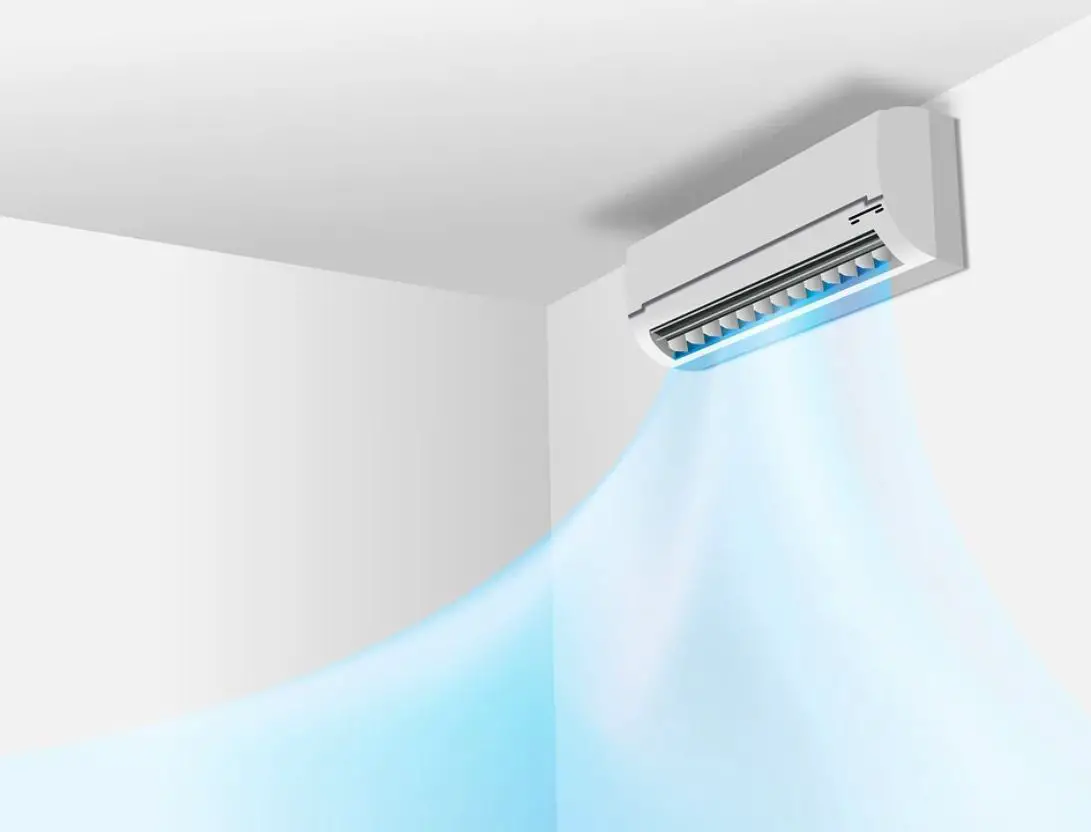
Ductless Air Conditioner Cost Terminology and Common Concepts
Understanding some basic concepts and terminologies used in air conditioners is critical in determining their prices.
Below are some common terminologies you're likely to encounter in your pursuit of an excellent ductless air conditioner.
- SEER Rating: SEER is short for Seasonal Energy Efficiency Ratio, a measure of the amount of energy required by the system to cool a specific area for the entire season or during that time frame.
The same way miles-per gallon determines fuel efficiency in a vehicle, high SEER in an AC means improved efficiency and cost savings.
- EER Rating: EER is an acronym for Energy Efficiency Ratio. It is a different standard used to determine an AC's efficiency.
Unlike SEER that determines an air conditioner's cooling efficiency, EER is the cooling capacity produced, divided by the energy amount (watts) the AC takes to generate the amount of cooling.
Most manufacturers use SEER ratings to compare systems efficiency, but some also include EER ratings. AC's with higher SEER or EER ratings are generally expensive and offer more comfort than other basic models.



Photo credit: pickhvac.com
- HSPF Rating: HSPF is short for Heating Seasonal Performance Factor, measuring a heat pump’s heating efficiency. High HSPF numbers mean efficient heating. Most ductless air conditioners will offer both cooling and heating effects depending on the climate.
- BTU: British Thermal Units per Hour (BTUh) is another measure of cooling capacity or output used to compare AC units. Most ACs with a high cooling output capacity are always slightly bigger and tend to require more components, and are also expensive.
However, for BTU, bigger is not always the best. Instead, pick a BTU capacity according to the size and space you intend to air condition, among other factors. - Wall-mounted AC Unit: These are indoor units mounted against the wall at an eye level or slightly above.
- Floor AC Units: Floor units are freestanding indoor cooling units that can run freely.
- Ceiling Cassettes: Ceiling cassettes are indoor units that almost flashes with your ceiling. The air pushes through vents to cool the intended area.
- Condenser Unit: Condenser unit is an outdoor component of an AC system comprising a compressor, fan blade, and refrigerator coil. It is where the hot vapor is absorbed for cooling before being released into a room.
How Much Does a Ductless Air Conditioner Cost?
The answer to how much a ductless air conditioner costs is a broad topic that does not have a straightforward answer.



Depending on various factors and specifications, a ductless air conditioner will cost somewhere between $2,000 for residential use and up to $14,500 for commercial purposes or larger homes. However, these numbers may vary across regions and depending on other factors.
Generally, a ductless air conditioner will require an outdoor condenser unit with one or several indoor units, also known as air handlers, depending on the number of rooms you intend to air condition.
So, the higher the number of zones to air conditioning, the more indoor units you'll need, hence the more you'll spend.
Here, we'll focus on three categories for an insight into the cost of a ductless air conditioner.
- Ductless HVAC system cost
- Installation cost
- Cost by zones
Ductless HVAC Price Factor
The factors below will determine the cost of a ductless AC system:
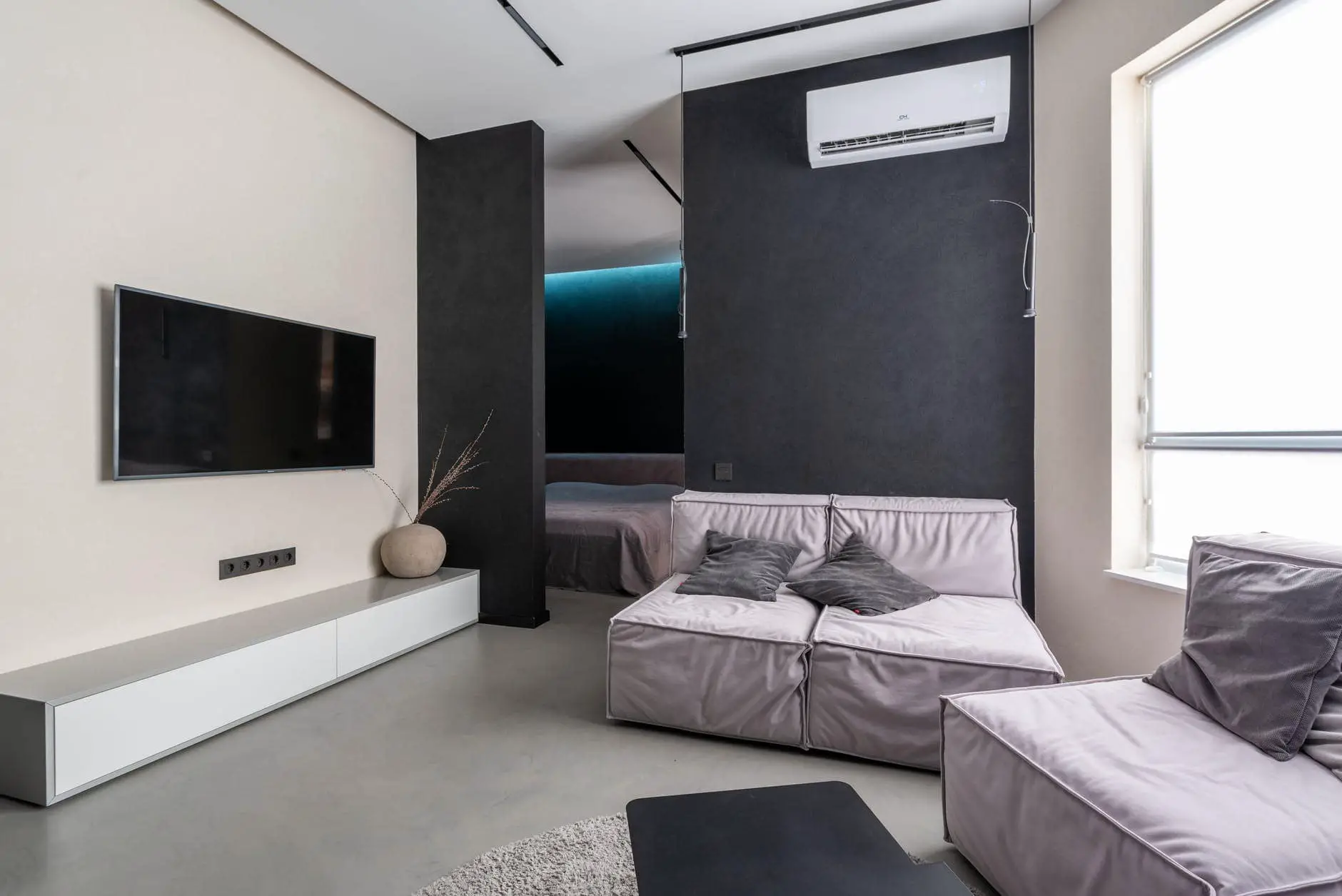


Single or Multiple Zones
The number of zones is a significant cost factor when thinking of a ductless AC. More zones mean more indoor units to install, which translates to higher costs.
Indoor Unit Design
Also known as evaporator units, the type of indoor unit you choose comes at different prices.
Wall-mounted units are the most common and affordable, followed by floor units used mainly in larger HVAC systems. Ceiling cassettes are more efficient and tend to cost more compared to ceiling-suspended designs.
You'll find most indoor units in the below price ranges:
- Wall Mount: $200-$1,000
- Floor Units: $500-$2,000
- Ceiling Mount: $700-$2,000
Heat Pump
As a rule of thumb, extreme climates will require a more efficient ductless system. High-end heat pumps to serve you well during humid summers will cost up to about $6,000. However, there are cheaper heat pumps that cost $1,000 or slightly below.
Note that efficiency level is critical in any AC system; hence, a ductless AC with higher SEER and EER ratings will cost you more. For example, the lowest ductless AC SEER is about 15, while the highest mini splits have up to a SEER rating of 38.
Installation Cost
Installing a ductless air conditioner is a complicated task that may require the services of a professional. Below are guidelines on how much you should expect to spend on installation.
Typically, installing a mini-split should cost about $500. However, for a more complex installation where drilling hard stone siding and brick to run the lines is involved, the cost will go as high as $2,000.
You'll need to hire both a carpenter or a mason alongside a technician, hence end up spending more.
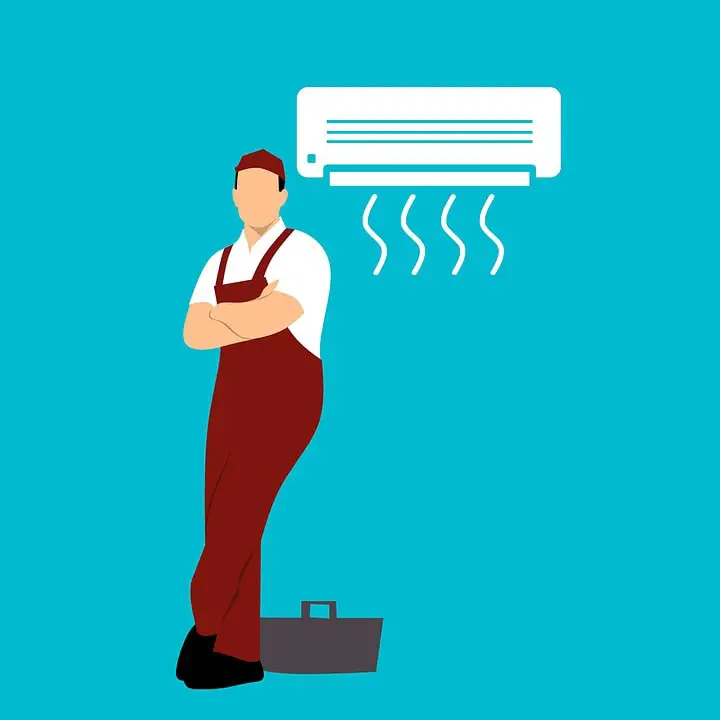


Cost By Zone
The more zones you need to cool, the higher the cost depending on the BTU rating. Powerful outdoor condenser units will support up to about eight zones.
Typically, a single zone with up to 24,000 BTU will cost you between $1,900-$3,600, whereas more than 24,000 BTU costs between $3,300 and $7,000.
Five to eight zones with more than 24,000 BTU will cost you a whopping $ 6,000 to $12,000 or more.
So, the average cost of installing a ductless AC based on the above computation is $4000, while the cheapest ductless AC will cost you a paltry $2,000.
The highest you'll spend on installing a ductless AC is $14,500 or slightly less or more, depending on other factors. All the prices include an installation accessory kit that includes drain tubes, sleeves, and lines that cost between $300-$500.
NB: Refrigerant lines cost about $5 per foot.



Photo credit: denverpost.com
Multi-Zone vs Single-Zone Mini-Split
Your home layout, budget, size, and air conditioning needs will determine whether you'll need a multi-zone or a single zone AC system.
A single-zone system has one indoor air handler and an outdoor compressor. Such a system is usually for cooling just the open floor space where it's located. Therefore, single-zone systems are suitable for small homes.
On the other hand, just as the name suggests, a multi-zone system is suited for homes with multiple rooms to cool. Since an outdoor compressor will accommodate up to four air handlers or more, you'll be able to cool more rooms simultaneously.
However, you may need to get an extra powerful outdoor condenser unit if you're going to connect more indoor air handlers, or you can opt to use two outdoor compressors.
So, the initial cost of multi-zone systems will generally be higher, plus the installation, if multiple air handlers are involved. In addition, you'll need a more powerful outdoor compressor to run multiple indoor units than you'll need for a single air handler.



Photo credit: nyaccenter.com
Are Ductless ACs Worth the Investment?
A ductless air conditioner is the latest craze for most homeowners due to its efficiency levels. Here are reasons you should consider a ductless AC if you've not acquired one.
Cost Saving
Unlike central units that will require duct installation throughout the home, a ductless AC is a one-off installation with little maintenance and repairs needed over time.
Also, apart from the efficient cooling, ductless ACs use very little energy to run, which significantly reduces the cooling bills.
Low energy usage also means reduced carbon footprint making it friendly for eco-conscious homeowners.
Independent Indoor Unit Operation
Independent temperature control of indoor units is another factor that sets ductless air conditioners apart from other types such as central ACs. A central air conditioner uses a single thermostat centrally controlled to cool the entire home at the same temperature.
Ductless temperature settings can be controlled per zone using individual remote controls. In addition, you can switch off other zones that are not in use to save on your bills. You can also set a unique room temperature depending on the occupants' preference.
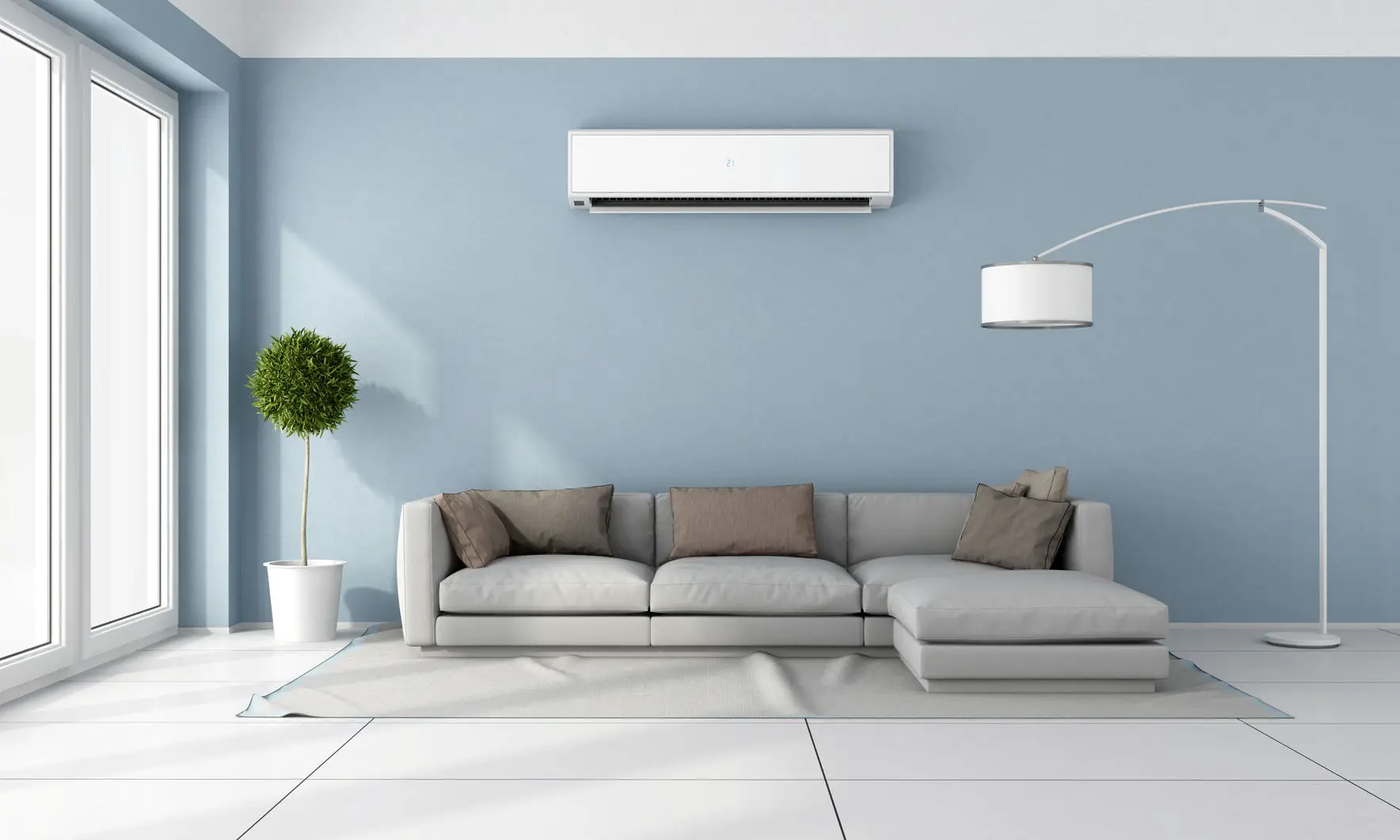


Photo credit: ahs.com
Long-Term Efficiency
Central air conditioners will serve you up to an average of between 20 and 25 years. A ductless one will last for up to 30 years or more. So, although the initial cost tends to be higher, the investment tends to be worth it in the long run.
Also important to note about ductless air conditioners is their silent operation. If you have babies or you're a light sleeper, then a ductless AC is your ideal option.
What Factors Affect the Cost of a Ductless Air Conditioner?
Until now, you can tell how various factors play a significant role in determining the cost of a ductless air conditioner.
Below are the top factors to keep in mind when shopping for a ductless AC.
Home Size and Layout
A large home with more rooms to cool will require a multi-zone heat pump and an outdoor condenser unit to support multiple air handlers. The more indoor units involved, the more power condenser you'll need; hence the more expensive it will be.
Indoor Unit Type
Do you intend to use a wall mount air handler, floor mount, ceiling cassette, ceiling suspended, or a vertical air handler? All these narrow down to your preference and budget.
Generally, wall mounts are common and are more affordable, followed by floor mounts and then ceiling cassettes which are a little expensive but more efficient.
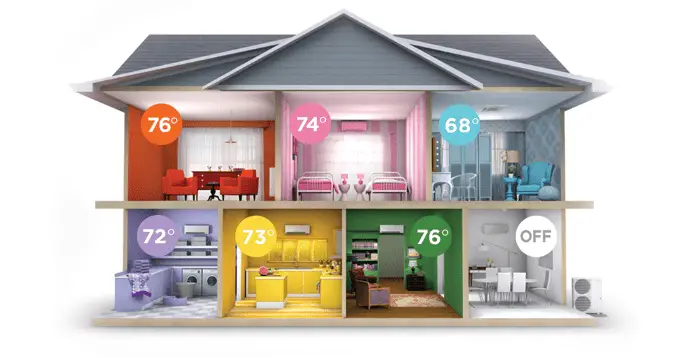


Photo credit: indoortemp.com
Ductless System Energy Efficiency
Energy consumption is another crucial factor to keep in mind. Ductless ACs with a SEER rating of up to 38 are the most efficient. Check on other efficiency measures such as EER, BTU, and HSPF.
Your dealer should guide you in understanding how such measures impact efficiency levels in case you feel confused.
Accessibility of Indoor Air Handler Mounting Spot
A technician will help you determine the right spot to mount any indoor air handler you choose to mount.
The location should be easy to access during installation (easy wall drilling and near the installation sport to save on refrigerant tubing material).
Outdoor Condenser Capacity
Depending on how many zones you intend to cool, liaise with your dealer to help you determine the appropriate outdoor compressor capacity. Typically, an outdoor condenser works well with a single zone for cooling one room.
You may need two or more powerful condensers if you plan to cool multiple rooms.
Refrigerant Tubing Material
Copper tubing is always the best for refrigerant tubing. However, your technician will help you determine an ideal type that suits the ductless air conditioner system you intend to install.
Ductless Air Conditioning Cost vs Central Air
Ductless air conditioners vary in both initial price and overall maintenance cost compared to a central AC. While a ductless AC will cost more to purchase and install for more air handlers, it requires very little maintenance over time than central ACs.
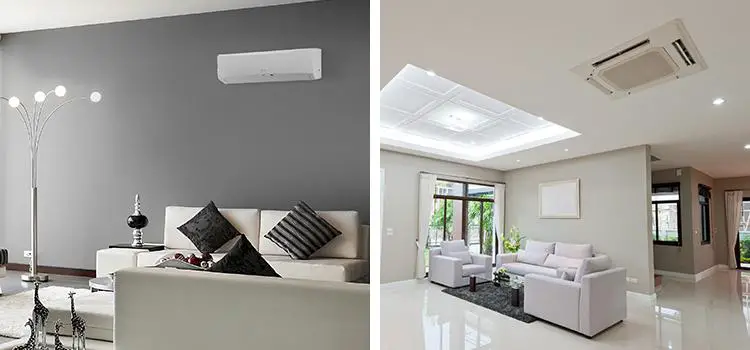


Photo credit: comfortup.com
Below are more reasons why the two ACs differ in prices and overall maintenance costs.
Components
A ductless AC comprises three major components, an outdoor condenser unit, one to eight indoor units, and refrigerant coolant lines that connect the two units through the wall. A central AC is one big unit with several ducts.
The more indoor air handlers involved, the more powerful an outdoor condenser unit should be; hence the more it will cost.
Installation
You may need to install up to eight indoor units for a ductless air conditioner, depending on your home layout and size. The more units involved, the higher the installation cost.
In contrast, installing a central AC involves a single unit connected to several ducts.
However, if you need to install a central air conditioner in a home without ductworks, such as old houses constructed without any duct lines in mind, it will cost you more than installing a ductless AC that will require a small three-inch opening on the wall.



Photo credit: andysheating.com
Maintenance
A central air unit will require duct maintenance from time to time to ensure no leakages accrue extra charges.
On the other hand, a ductless AC has minimal to no leakage, making them very easy to maintain, reducing your overall monthly cooling bill.
In summary, a ductless air conditioner will cost you more on the initial acquisition, mostly when installing several air handlers.
More indoor air handler numbers of up to eight may require two or one powerful compressor units, which can be pricier than acquiring a central unit.
However, a ductless AC uses very little energy, requires very little maintenance and repairs, and will serve you for up to 30 years or more.
On the other hand, a central AC will cost more for installation in homes with no prior ductworks, plus the duct will require lifetime maintenance.
Additionally, central AC ducts are prone to leakages, which will inflate your monthly cooling bills plus, they have a shorter lifespan than their ductless counterparts. Therefore, you'll need a new AC sooner than when you use a ductless design.



Conclusion
For your HVAC requirements, ductless air conditioners are the most efficient systems available on the market today. Although they'll cost more on the initial acquisition, here are reasons why they are a worthy investment.
- Available in up to 38 SEER rating, meaning they are more energy-efficient
- Easy and fast installation
- Flexible placement options
- Require little maintenance and repairs
- They do not require any significant construction
- Prolonged lifespan of up to 30 years
People Also Ask
More people are moving from the traditional HVAC systems into the modern ductless ACs. Below we answer some common questions from individuals and businesses about ductless air conditioners.
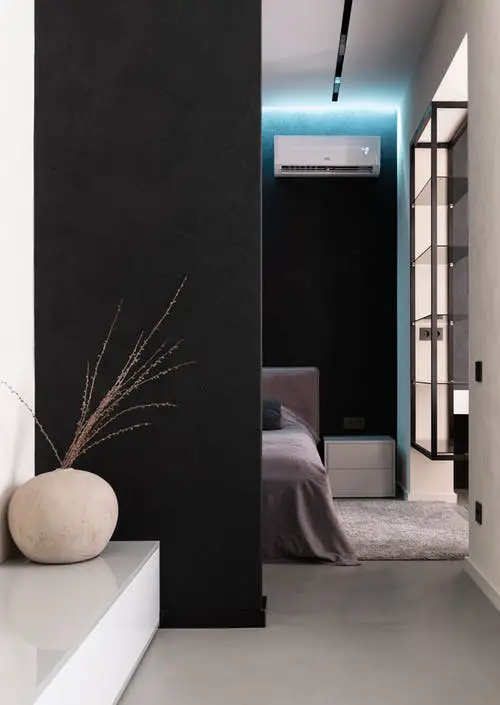


Is Ductless Cheaper Than Central Air?
Cost is a significant factor when making purchases of expensive products such as HVAC systems. Generally, the traditional AC, which many now look at as being old and fading off the market, will have a lower initial cost than a ductless air conditioner.
The U.S. Energy Department estimates that installing a central AC costs 30 percent less than installing a ductless AC. However, ductless ACs will cost more at acquisition but require very little maintenance, making them affordable in the long run.
Do I Need a Mini Split for Every Room?
You can connect a single outdoor condenser to up to eight indoor units. If you want to run more than one cooling area within your home, you may consider multiple mini splits for each room.
Unlike central AC units, ductless AC systems feature independent switches for indoor units; hence you should not worry about more power consumption.
Can I Install Ductless AC Myself?
Installing a ductless AC system requires a certified HVAC technician with a refrigerant license. Licensing laws might vary across states in the U.S. However, some brands are now manufacturing DIY systems that do not require a pro to install.
Although not an easy process, if you are good with mechanicals and armed with a few handy tools and the manufacturers' instructions, you can install the system by yourself.
